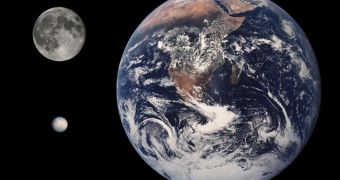Pluto was once a fully-fledged planet, considered by astronomers to be the ninth such object from the Sun. However, following a length and very divisive discussion in the international scientific community, the celestial body was demoted to a dwarf planet back in 2006.
Since then, many experts have been arguing about the traits that should be considered in order to qualify an object such as Pluto as either a planet or a dwarf planet. In the currently-accepted model, our solar system has four rocky planets, four gas giants and 5 dwarf planets.
Pluto was only excluded from the class that holds Earth, Mars, Mercury and Venus five years ago, when an organization called the International Astronomical Union (IAU) voted to demote its status.
The criteria that an object must meet in order to circumvent this reclassification include being in orbit around the Sun, having sufficient mass that gravity pulls the object into a nearly-round shape, and being capable of clearing its orbit of any other debris.
Pluto successfully passed the first two marks, but failed at the third, as it still shares its orbit with other space rocks in the Kuiper Belt. It also has four moons orbiting its center of gravity, but yet it could not clear its orbit of other, unbound objects.
Ceres (in the Inner Asteroid Belt), Eris, Haumea and Makemake (all in the Kuiper Belt) are the other four dwarf planets accepted as such to date. There are also several other candidates, for which astronomers do not have sufficient data for a comprehensive classification.
In total, the IAU tracks 40 celestial bodies that may be classified as dwarf planets in the future, while astronomers estimate that as many as 200 such objects may permeate the Kuiper Belt, beyond the orbit of the gas giant Neptune.
An upheaval similar to the one Pluto's reclassification caused also took place when Ceres was found, orbiting the Sun between Mars and Jupiter. At the time, it was classified as a planet, but later objects of similar mass were identified in the IAB too.
The enormous asteroid Vesta – currently under investigations by the NASA Dawn spacecraft – is also very large, but it does not meet the second and third criteria set forth by the IAU. It is still shaped more or less like a peanut, rather than a sphere.
Undoubtedly, developing a new way of classifying planets will be produced in the future. In the mean time, astronomers will continue their theoretical debate on what type of celestial objects can be classified as such, Space reports.

 14 DAY TRIAL //
14 DAY TRIAL //